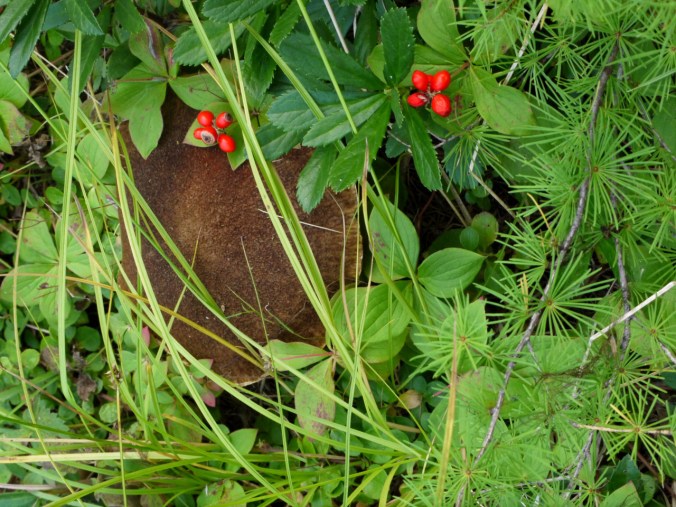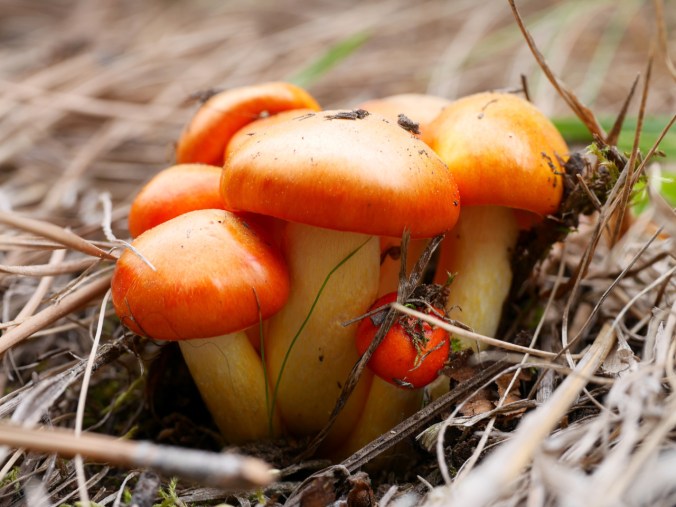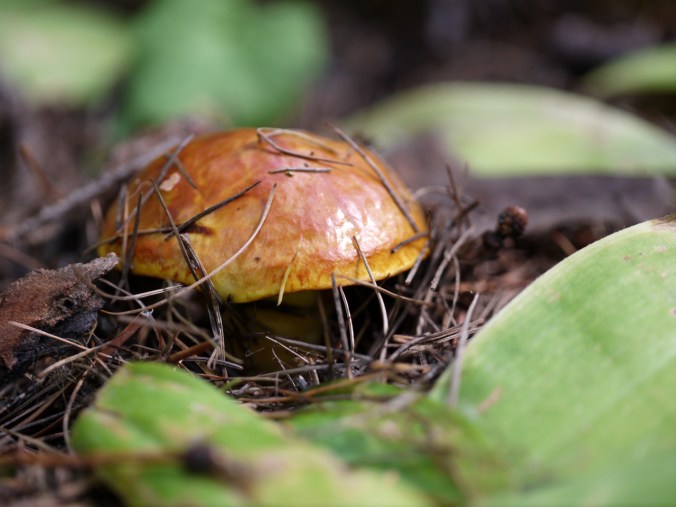
Suillus cavipes “Hollow-stemmed Suillus Bolete” Basidiomycota
Seeley Lake, MT
September 13, 2014
Robert Niese
Here’s another bolete from my late summer mushroom-hunting extravaganza in the Larch forests around Seeley Lake. This species, another easily-recognizable bolete in the genus Suillus, is also an ectomycorrhizal symbiont with larch trees (Larix). This species has a dry, very scaly cap that tends to be dark brown in color. Like other members of this genus, it also has angular pores that appear to radiate from the stipe. The best way to confirm the identification of this species, however, is to cut open its stipe and verify that it’s hollow. Unlike other members of this genus, S. cavipes is far more palatable and has a pleasant earthy taste when dried, but, like other Suillus boletes, tends to be slimy when cooked. Here, S. cavipes is growing among Twin-flower (Linnaea borealis), Canadian Bunchberry (Cornus canadensis), Prince’s Pine (Chimaphila umbellata), and, of course, Western Larch (Larix occidentalis).







